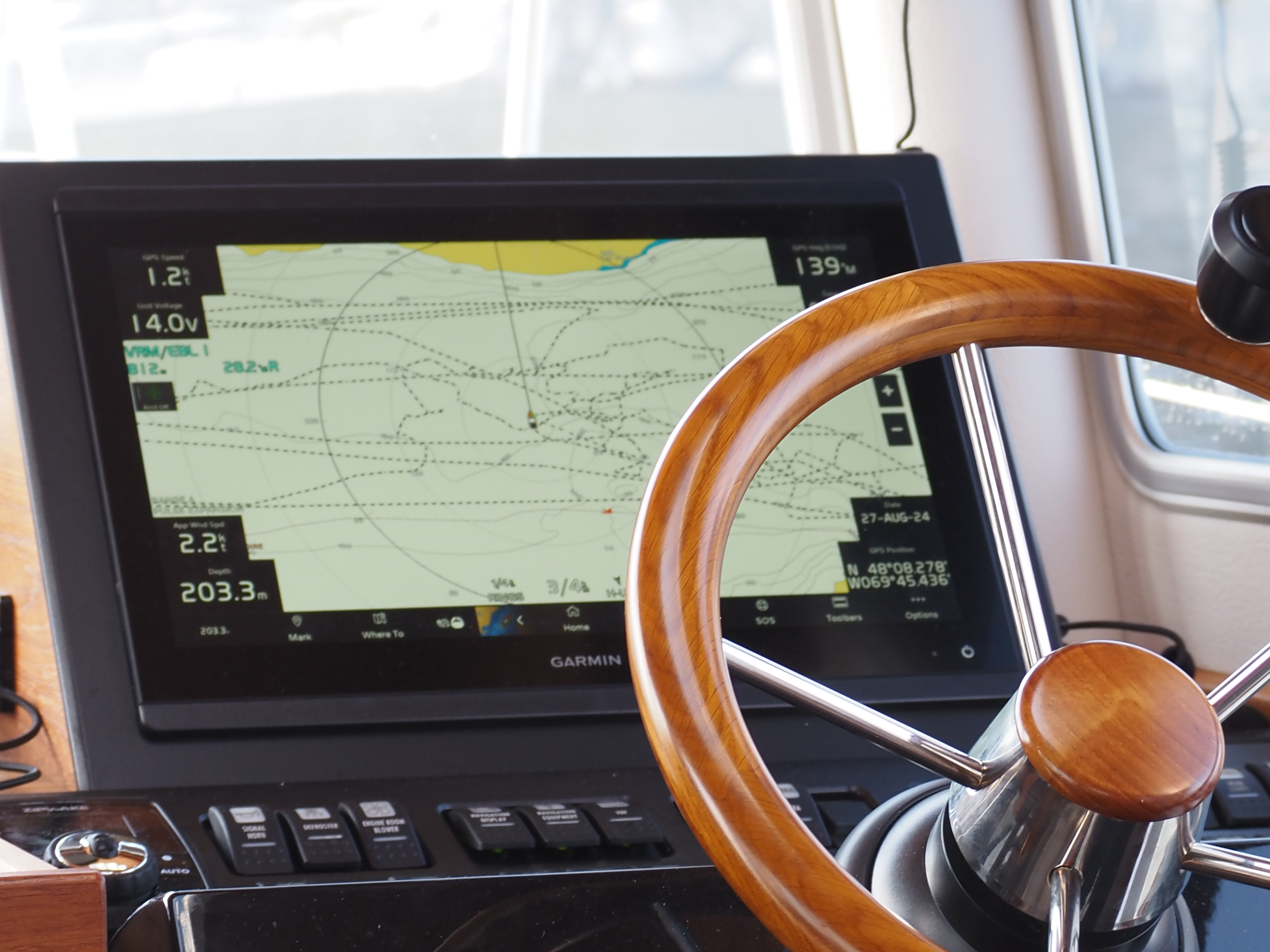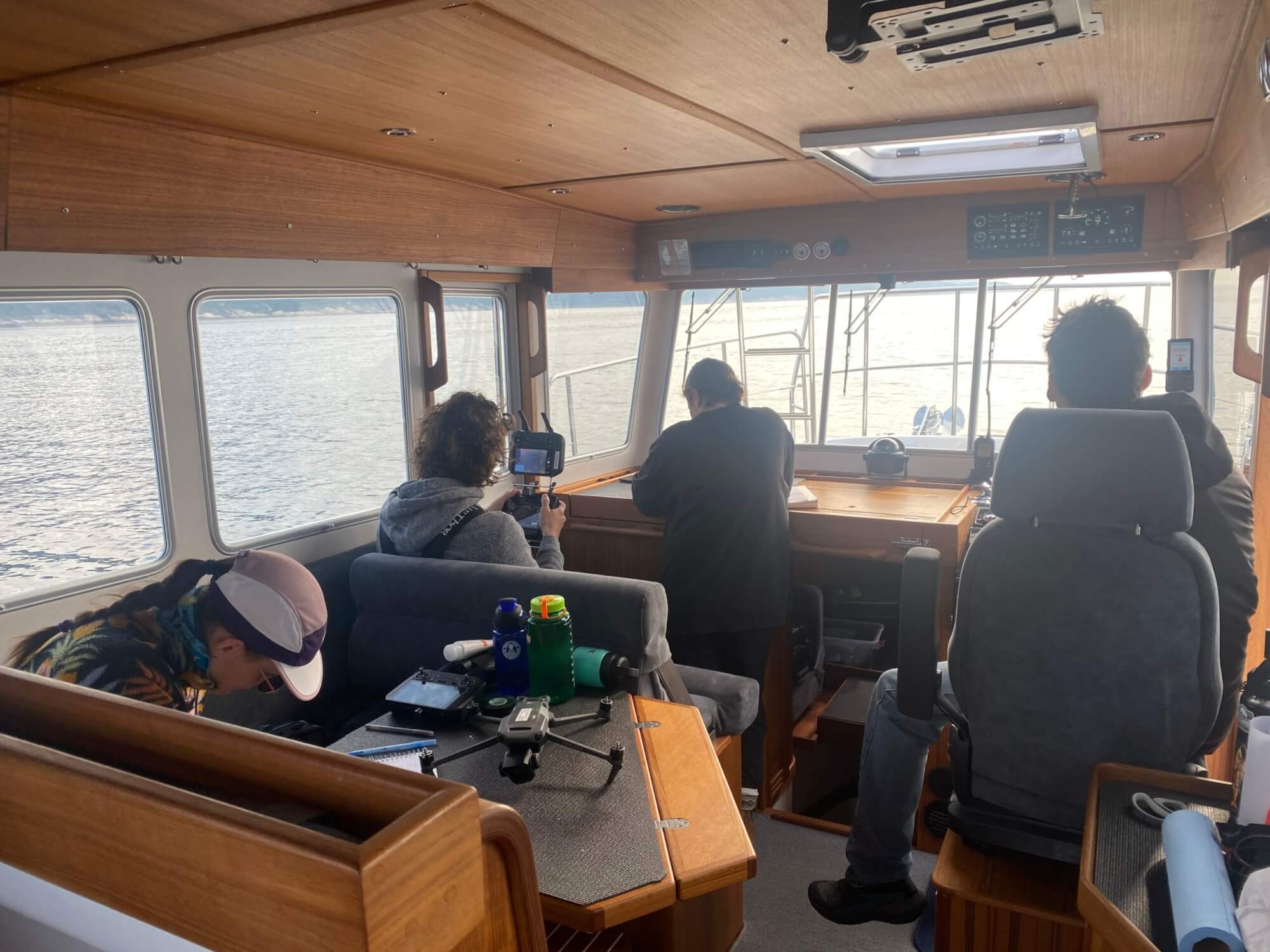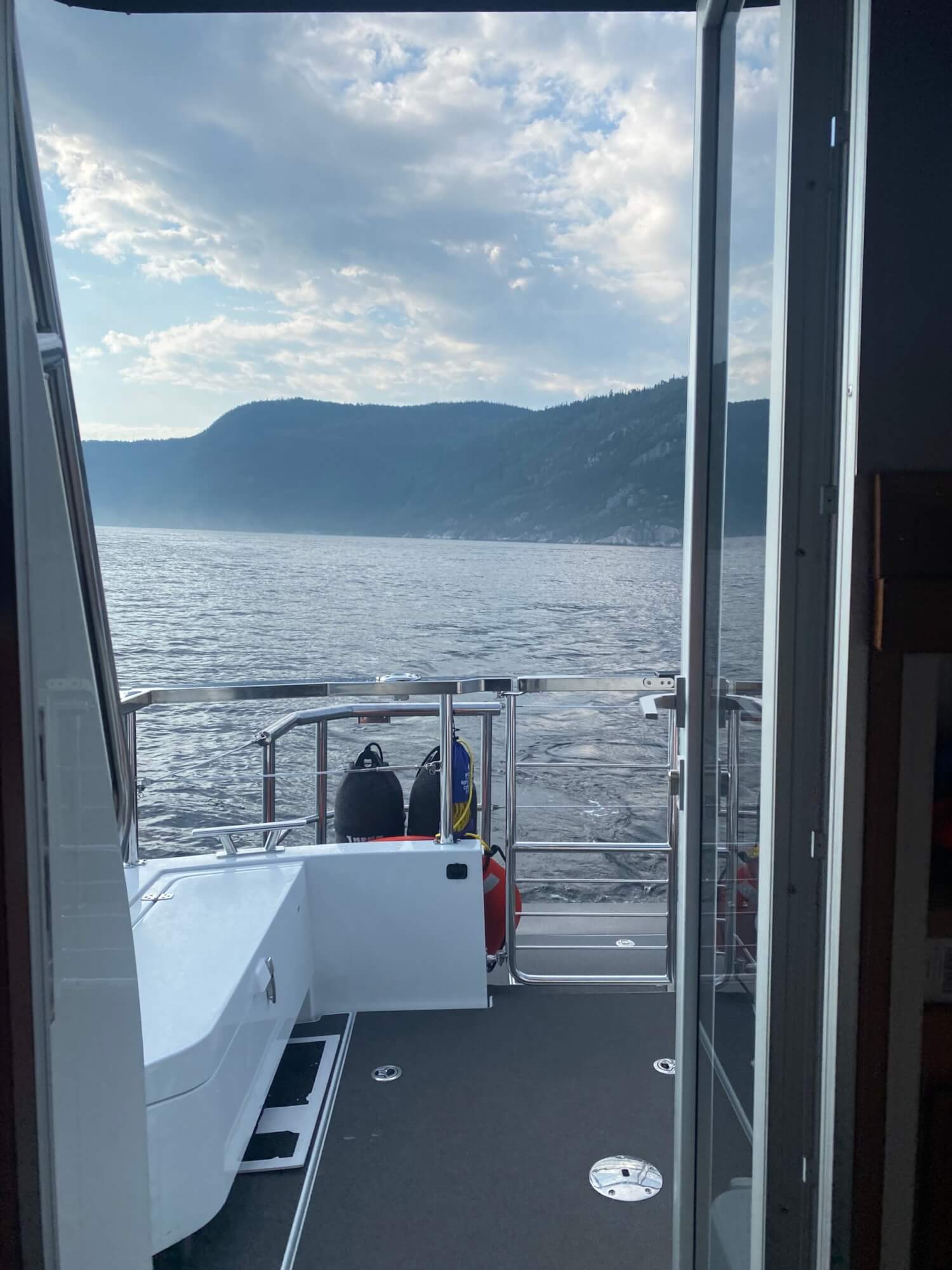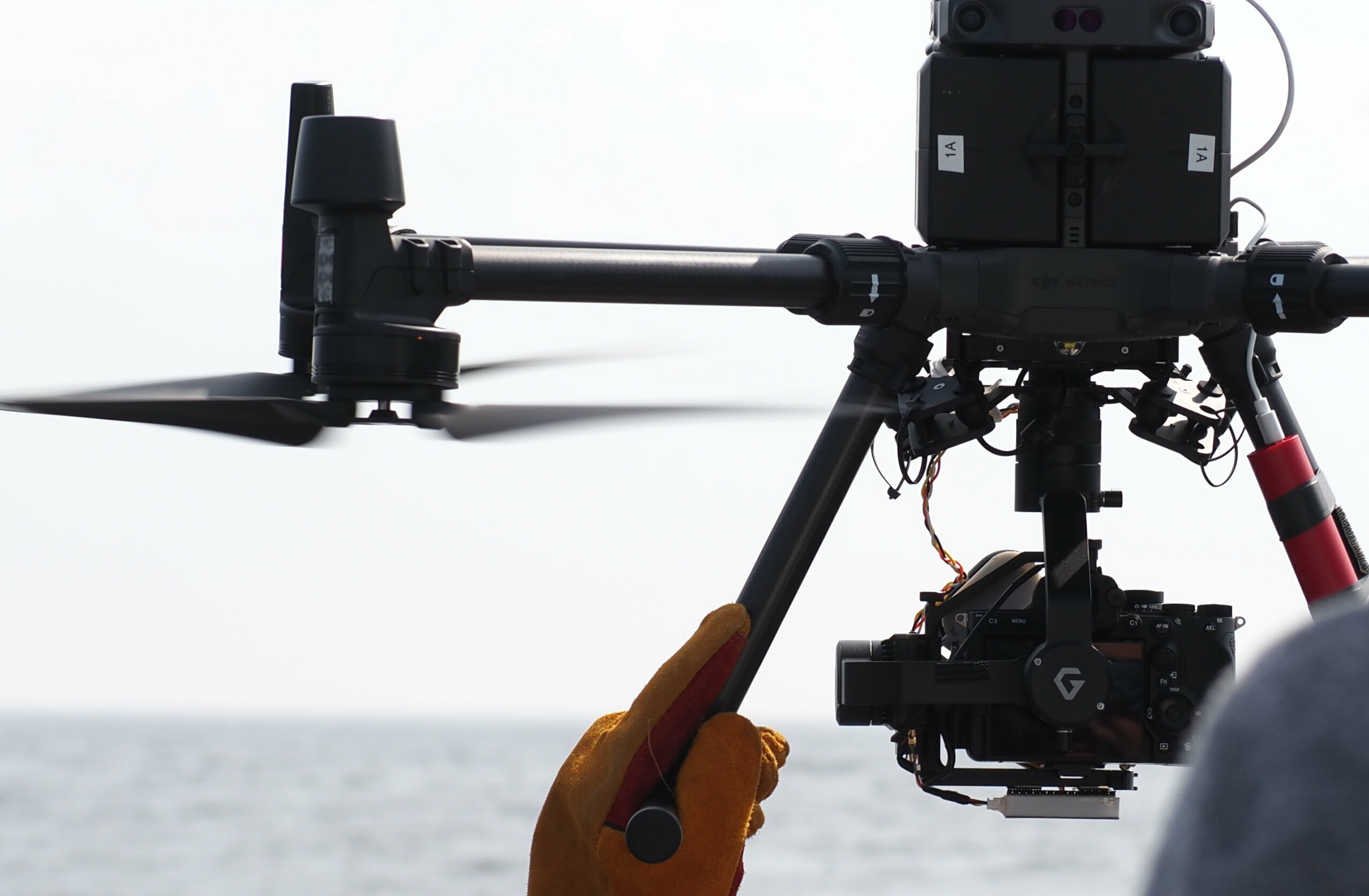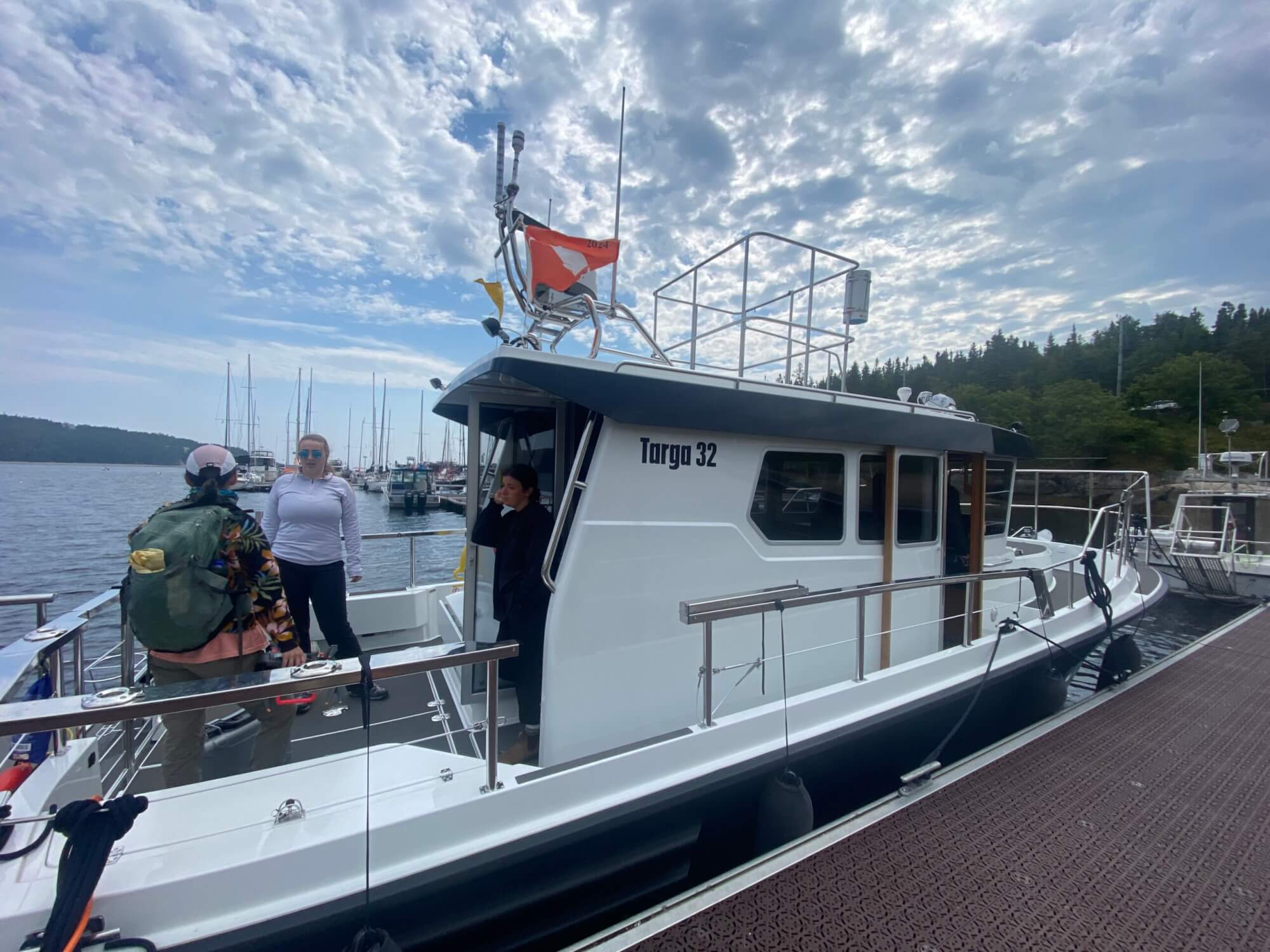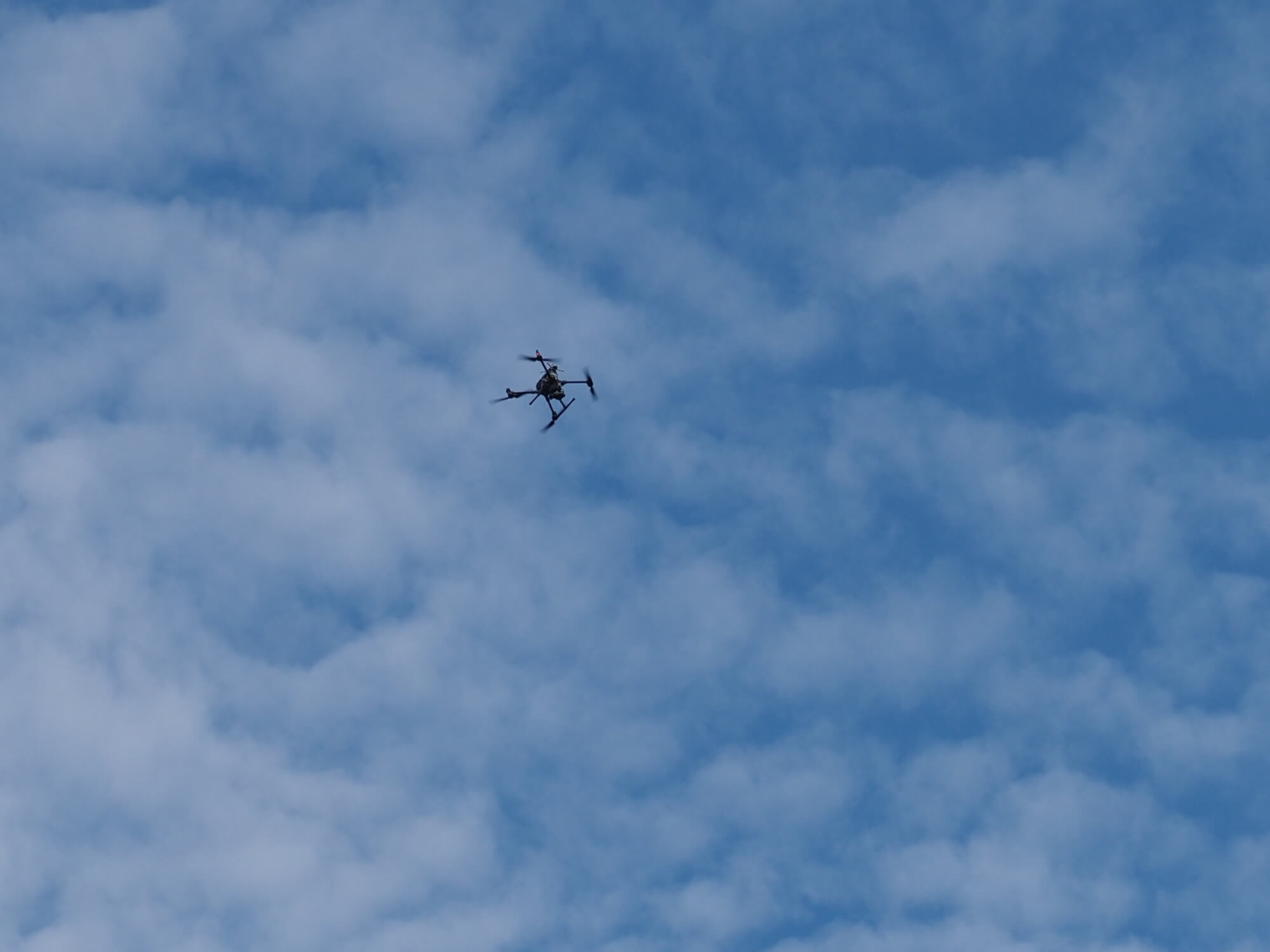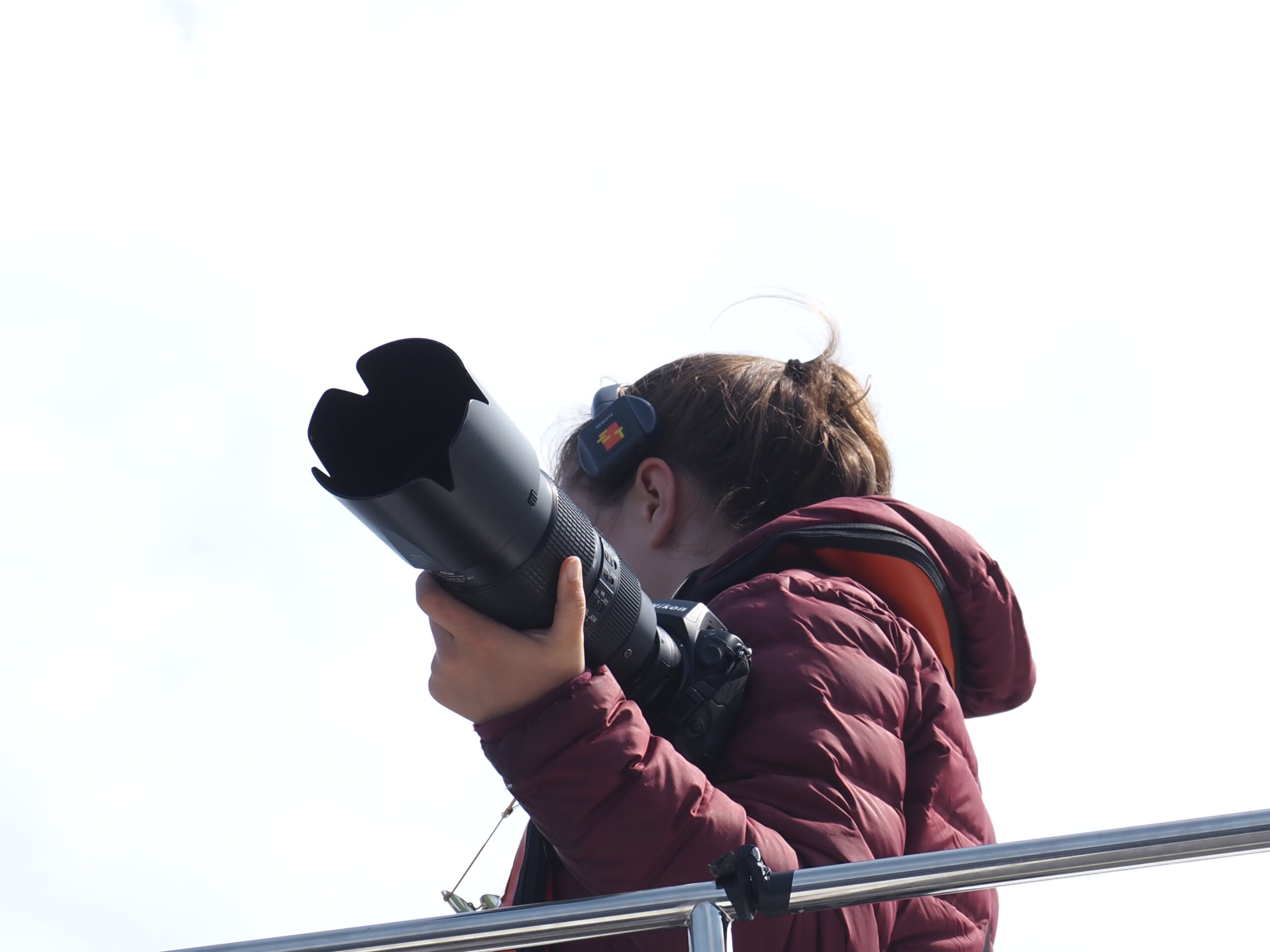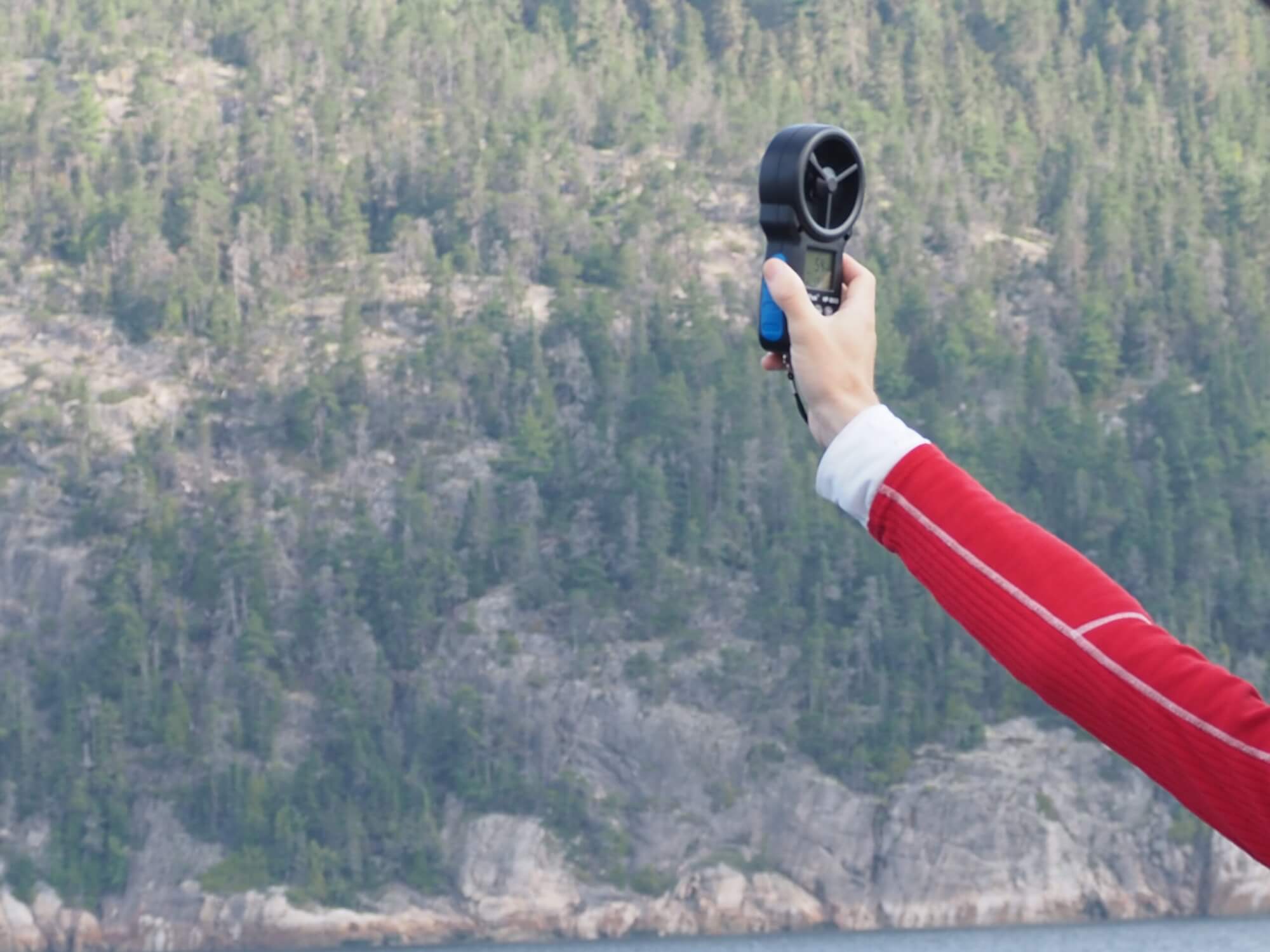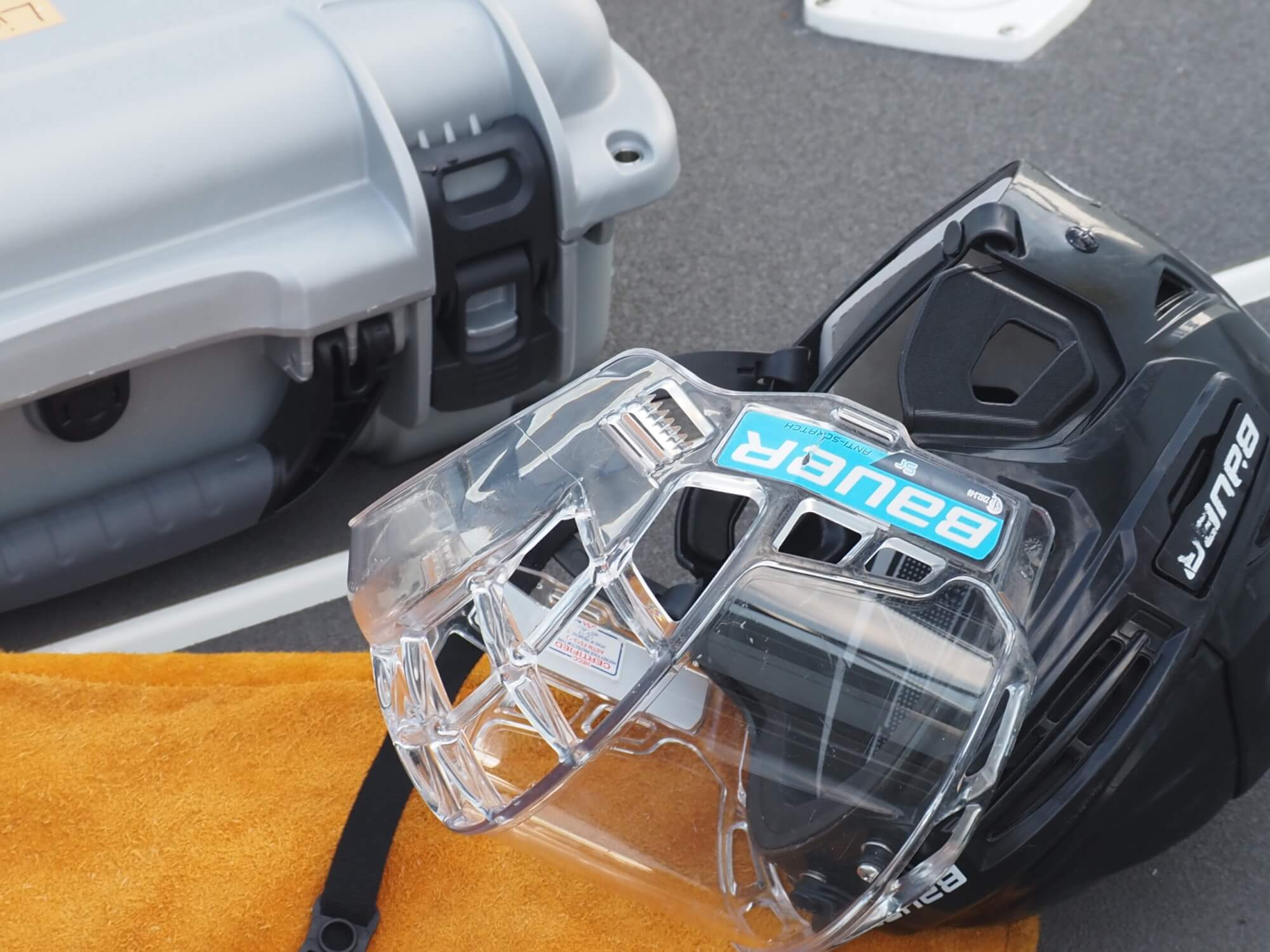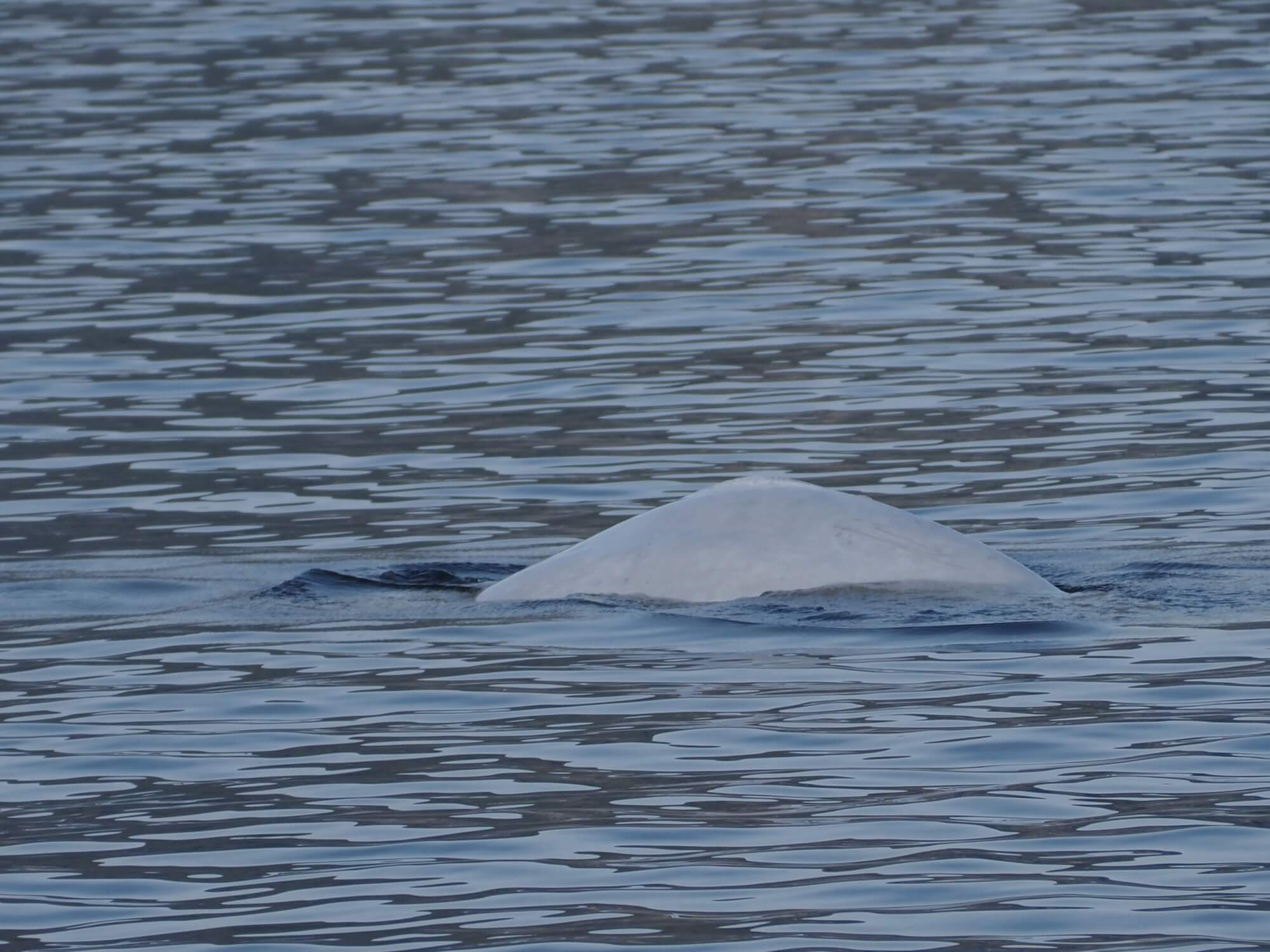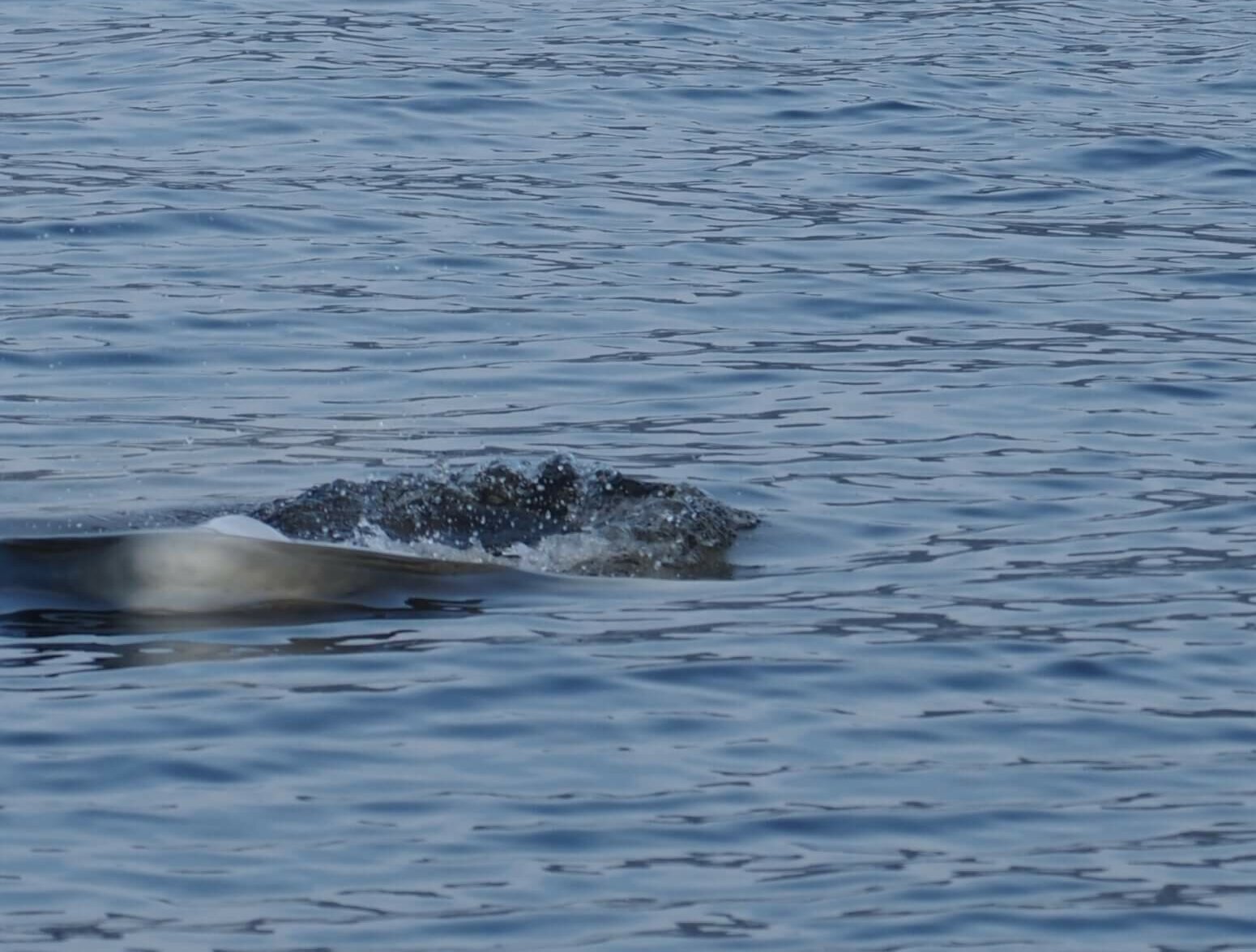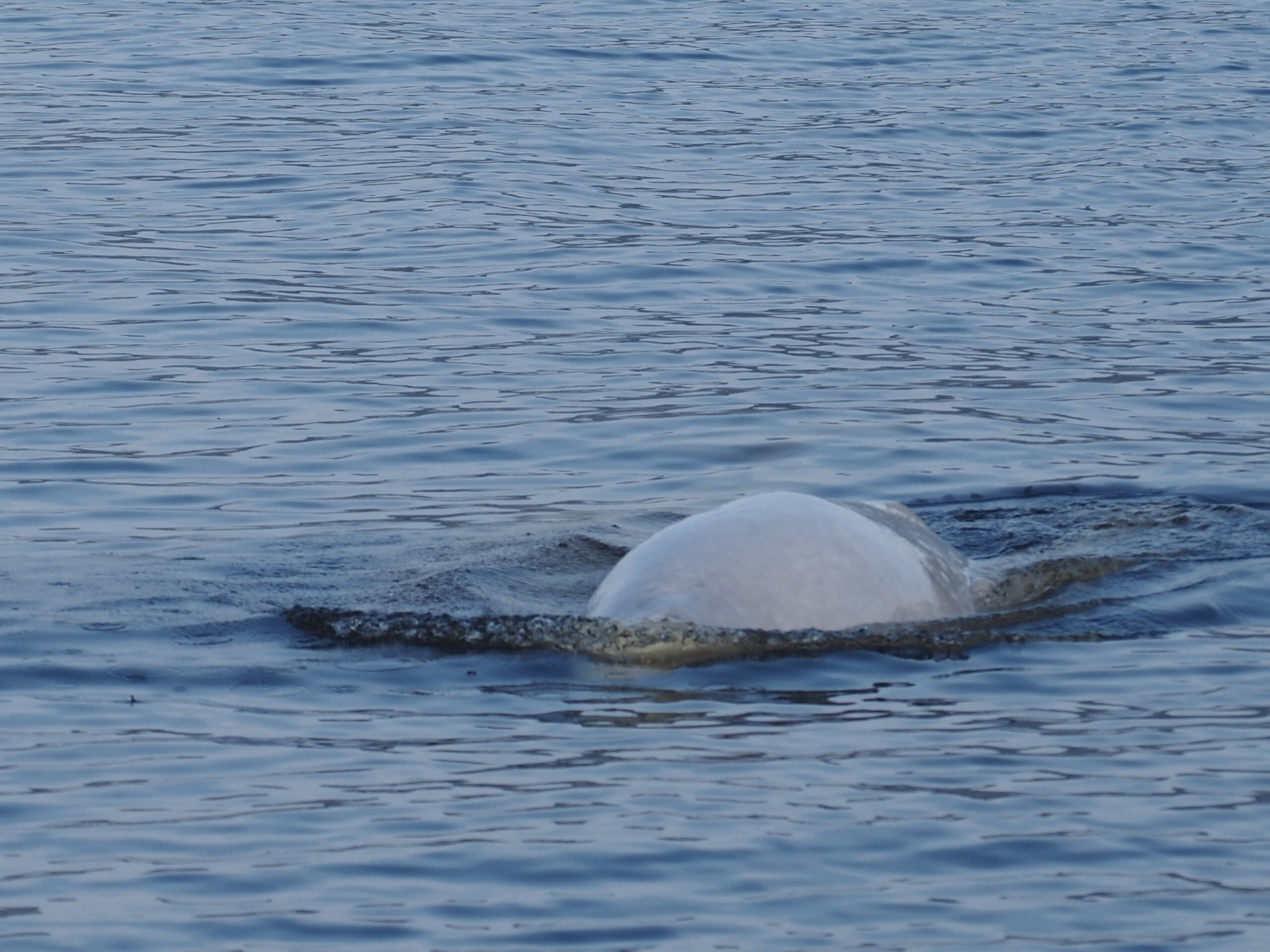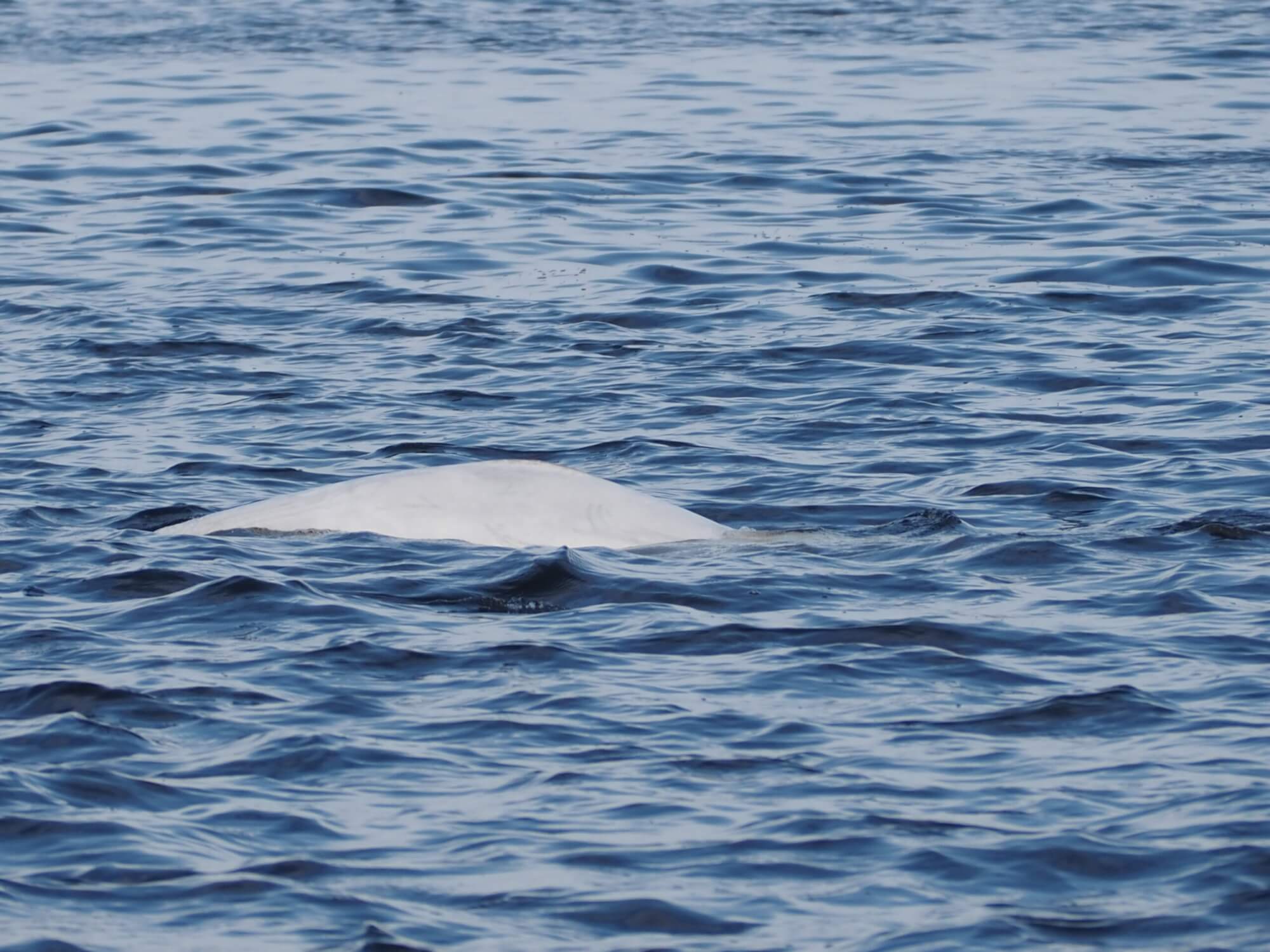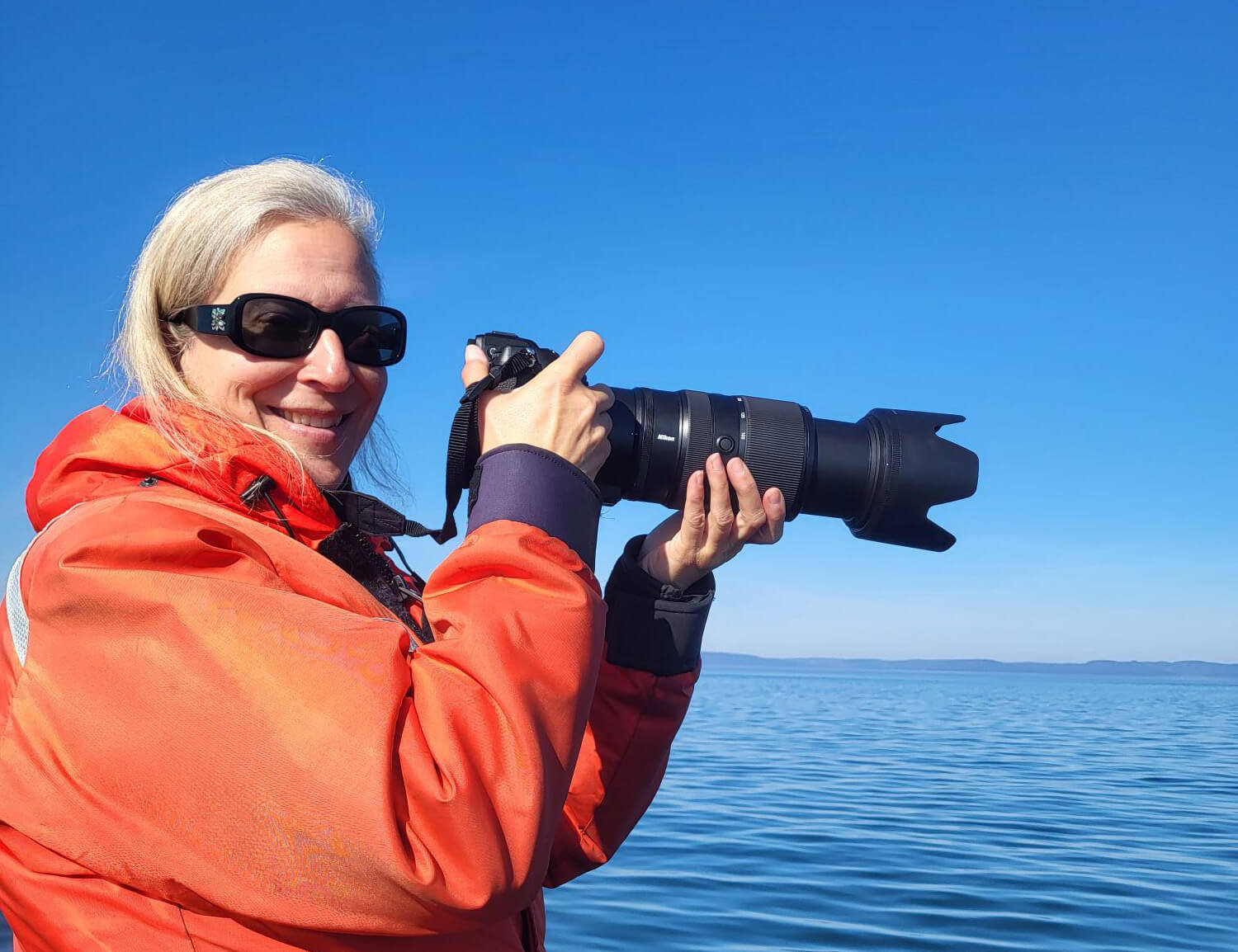Tuesday, August 27, 8:00 a.m.: I’m due to meet the research team of Tadoussac’s Group for Research and Education on Marine Mammals (GREMM) at their research lab. I join the scientists as they prepare for their outing by filling their bags with gear and drones. It’s a well-choreographed dance that provides a sneak-preview of what’s later to come. At 8:15 we set sail on Antarès, the beluga team’s new boat. Direction: Saguenay Fjord.
Wind in our sails!
It’s shaping up to be a gorgeous day, as a breeze is blowing the fog off the fjord. The conditions are not sufficiently favourable to venture offshore. Through the portholes, I can already see several dozen belugas scattered around. We have our first contact with a herd.
As an endangered species, the St. Lawrence beluga receives strong protection. Once it has obtained the required research permits, the team is obligated to follow a number of protocols and regulations. Amongst other things, they must wait 15 minutes before approaching a herd. This helps the belugas get acclimated to the noise of the boat while allowing us to quickly analyze how the group reacts to our presence.
A whole other world!
I am accompanying five members of the research team, including four research assistants and the team leader who oversees it all, Timothée, who is also our captain for this outing. Jade-Audrey is currently conducting tests for the Window on Belugas (WoB) project. This project consists of capturing behavioural videos of a group of belugas and identifying the associations that can be seen between females and calves for research purposes while also sharing with the public live-stream videos captured by the small drone. The images will be broadcast in real time at several shore-based observation sites as well as at Tadoussac’s Marine Mammal Interpretation Centre (CIMM).
Mathieu works for the St. Lawrence Estuary beluga observatory (ObsBESL) project. He pilots a larger drone, the Matrice 300, at an altitude of 50 metres and captures several photos of belugas that will later be used for photogrammetry, i.e. measurements of the animal. Estelle collects the data and is in charge of launching and landing the drones. Élizabeth, the last research assistant, tallies the belugas we encounter and is responsible for the photo-ID census project, which has existed since GREMM’s inception.
One thing is for sure: Between watching the belugas, flying the drone, and collecting data, there’s plenty of action on the deck of Antarès !
Like a beluga in water
At 8:45 our captain enthusiastically announces that we are heading toward belugas. Port side, starboard side, 9 o’clock, 4 o’clock… The animals are scattered across the fjord. Sometimes they come to approach the boat, other times they go about their own business. Quickly, Mathieu and Estelle get the drone ready for the first flight of the day!Who knows when these cetaceans will dive and disappear into the turbid waters of the Saguenay River?
Change of perspective
Everyone on the boat has their tasks. From bow to stern, everybody helps each other and nothing seems to be done in a hurry, but rather in a calm and orderly fashion. Even if conducing research requires rigour, GREMM scientists still know how to have fun and create a jovial ambiance on board.
The first drone flight begins shortly before 9:00. We observe a few belugas that seem to be moving down the fjord with the outgoing tide toward the St. Lawrence. The pilot steers the drone back to the idle boat around 9:12. Before launching a second flight, Mathieu changes the batteries, each of which weighs two kilos ! The energy-hungry drone that Estelle must handle weighs a total of about 9 kilos. An impressive piece of engineering!
While the DJI Matrice 300 is in flight for ObsBESL, Jade-Audrey tests the second drone for the WoB project. It seems to work like clockwork and once again, everything runs smoothly thanks to the seamless coordination between the scientists.
At 9:50 we head toward Cap à la Boule, farther up the fjord. At 10:05, Jade-Audrey performs the second drone test for live broadcasts from WoB to CIMM and the observation sites. Time is of the essence!
Pearls of the St. Lawrence
Some of the belugas seem intrigued by our presence. I can see their beady black eyes staring at us through the water. Others, on the contrary, seem rather disinterested and disappear quite quickly. I catch a glimpse of a mother and her calf under the yellowish surface of the water. The calf still shows fetal folds and several markings on its skin. Belugas are difficult to identify when they are young because their spots and other markings sometimes disappear as their skin changes colour! Maybe the team will be able to identify this one and monitor its growth?
The research protocol stipulates that no more than 3 hours should be spent with a given herd. Contact ended, at 11:30 we set off in search of other belugas above (i.e. farther upstream) Cap à la Boule, but to no avail. With the wind picking up and deteriorating weather conditions, flying the drones is proving challenging. Furthermore, measuring belugas in the water for photogrammetry purposes is best done in calm conditions with no waves. We return to the marina around noon.
Then what?
At half past twelve, our day of research on the water is over. But our job is far from finished! While part of the team takes care of the boat, the others take care of transferring and saving the data. Results of 4 hours on the water: 3,709 photos taken during 5 different flights from the camera attached to the M300 drone used for ObsBESL photogrammetry. This drone takes 5 photos/second when hovering above the belugas. For the Window on Belugas project, the team operated the drone for 30 minutes and 55 seconds. These videos will also be analyzed in order to study social interactions. As for photo-identification, Élizabeth captured 204 flank shots of different individuals. These photos will then be sorted through and renamed before being analyzed. A lengthy exercise awaits us! As for me, the day is not over either and I return to the editorial office with my brain well oxygenated after this offshore outing.
Today I had the privilege of observing some of the work that GREMM’s research team performs on an almost daily basis and seeing how they operate. Similarly, I enjoyed close-up and distant observations of belugas making a transit that they also do almost every day, in addition to learning a little more about their behaviour. For the rest of the afternoon I’m a little shaky on my legs , but it’s a small price to pay in exchange for the many memories I have of what for me was an exceptional morning!


